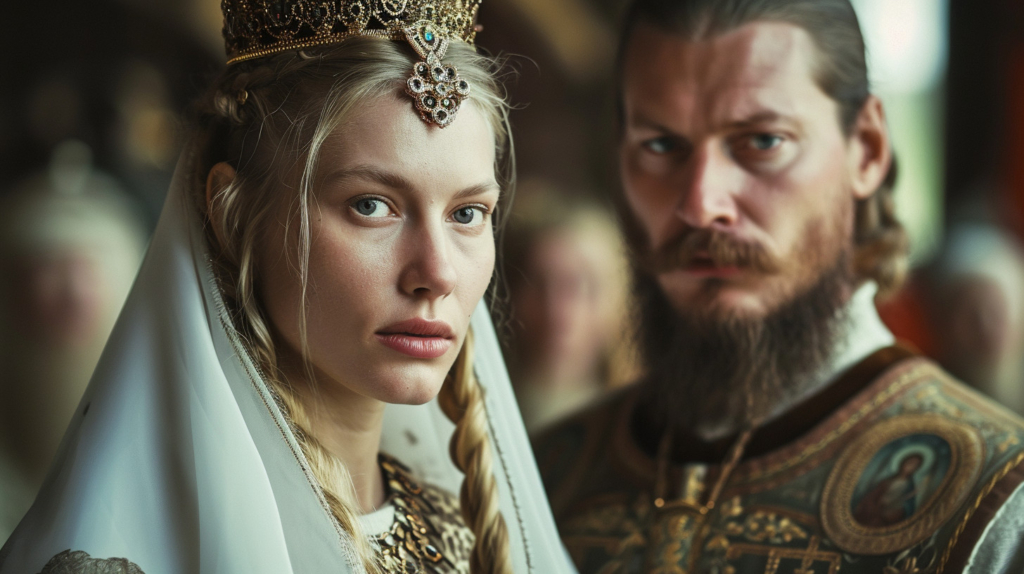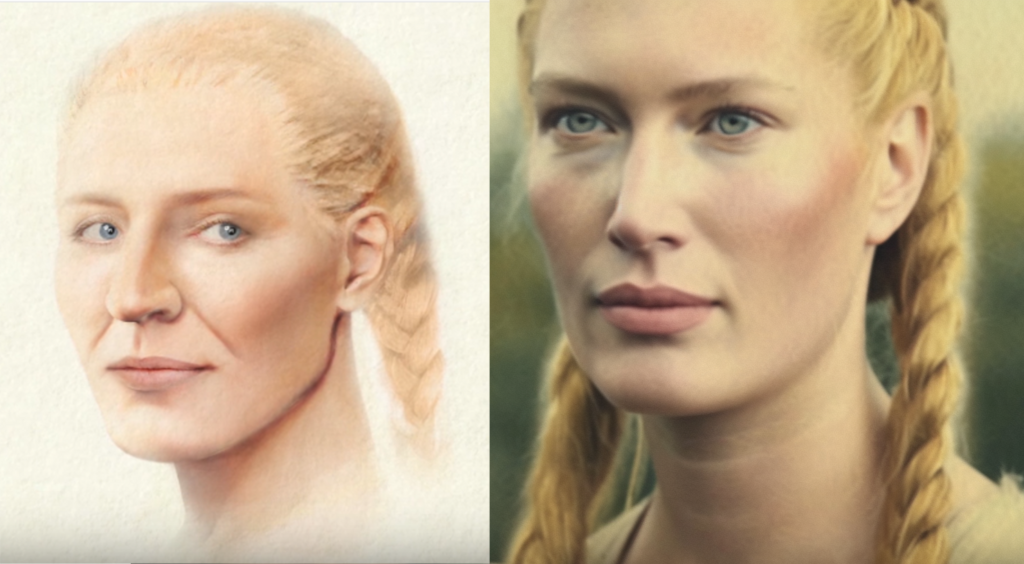In the first part of Ingegerd Olofsdotter’s story, we learned about her life as a Swedish princess, and her broken betrothal to the Norwegian king, Olav. We left the story with Ingegerd’s departure from Sweden, to marry the prince of Novgorod, Yaroslav I Vladimirovich (Yaroslav the Wise). Let’s continue.
In her new homeland, Ingegerd became known as Irina/Iryna. To avoid confusion however, I’m going to continue to call her Ingegerd.
If she had expected a quiet and luxurious life in Novgorod, she was mistaken. Yaroslav’s father, who had been prince of Novgorod and grand prince of Kyiv, had recently died, and her new husband and his brothers fought for power over the territories.
Yaroslav won a great victory in 1019, and became grand prince of Kyiv as well, though the fighting did not stop. Ingegerd’s father and then brother would send military aid several times.

Ingegerd had not yet turned 20 when she married Yaroslav, who was 25 years older than her. Despite being so much younger, she became an important advisor to her husband, even acting on her own accord sometimes, just as she had done in Sweden.
There are stories of how Ingegerd intervened in politics and negotiated truce between Yaroslav and one of his brothers (or nephews, sources vary).
During Yaroslav’s and Ingegerd’s reign, Kyiv experience a golden age. They rebuilt much of Kyiv and invited Greek priests, architects, artists and craftsmen, and built many churches. The most famous is the Saint Sophia Cathedral.
Ingegerd and Yaroslav had six sons and at least three daughters together. The daughters were married into European royal houses, and through their daughter Anna, who married Henri I of France, their descendants still rule Spain and Luxembourg. Their sons would after Yaroslav’s death engage in another generation of fratricidal conflict.
But what about her former betrothed, Olav of Norway?
They would actually get to meet in person. In 1028 he was driven into exile, and sought protection in Novgorod with Yaroslav and Ingegerd.

Norse Sagas claims that Olav and Ingegerd were in love, but there is really no evidence for this. He did stay with the royal couple for two years, so obviously they got along well. But he was also Ingegerd’s brother-in-law, so it could simply be support given to a family member. Olav had brought his son, Magnus, with him to Novgorod, and when he returned to fight for his throne (and eventually die in the battle of Stiklestad in 1030), he left Magnus with Ingegerd.
Ingegerd devoted herself intensively to the church and religious life. She founded a convent and, towards the end of her life, had herself ordained as a nun and was then given the name Anna.
Ingegerd Olofsdotter died in Novgorod on February 10, 1050, and was said to have been buried there. The people of Novgorod held a deep reverence for Ingegerd, and masses were held for her. Eventually, she was added to the church calendar and honored like a saint.
Ingegerd’s final resting place has been debated. Old sources claim she was buried in Novgorod, but later evidence suggest she rests with her husband in his sarcophagus in Sophia Cathedral in Kyiv.
During an examination of its contents in 1939, three skeletons were found: one of a man aged around 70, one of a woman aged 50–55, and one of a child aged about three. Jaroslav was in fact 76 years old when he died and Ingegerd about 50.
The examination of the man’s skeleton showed that he had been walking with a limp, which Yaroslav is known to have done. There is therefore little doubt that it really is Yaroslav in the sarcophagus. The bones were lying on top of each other, which indicates that they had been moved. Therefore it is possible that Ingegerd was originally buried in Novgorod, but moved to Kyiv at a later stage.

The first picture above is of the reconstruction of the skull believed to be Ingegerd Olofsdotter’s, and the other is my AI-version of it, made with Midjourney.
Ingegerd/Irina/Anna is still revered today in the Orthodox church as Saint Anna of Novgorod.
In her country of birth however, she is only a name – a daughter of a king and a lost love to another. But if you take the time to read her story, a strong and independent woman with her own ideas and agenda emerges, not afraid to take charge when needed.
I am honored to be telling her story, a millennium after her life and death.
Sources:
Edberg, Rune. Viking princess, Christian saint. (2005)
UR bildningsbyrån. Ingegerd Olofsdotter – svensk storfurstinna i Ukraina (2022)
If you want to know more about king Olav – Saint Olav – I have made a video about him, and the other Nordic patron saints. Watch here: https://www.youtube.com/watch?v=eirisUTgtpE&t

